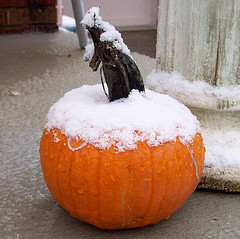
It’s hard to believe that this semester is finally drawing to a close. The multitudes of followers to our blog may have noticed our sparse posts this spring… Shifting responsibilities, timing of projects, and just the general “stuff” of IR have left us little time to keep up.
Part of my own busy-ness has been due to an increased focus on assessment, as mentioned in an earlier post. This spring, the Associate Provost and I met with faculty members in each of our departments to talk about articulating goals and objectives for student learning. In spite of our being there to discuss what could rightly be perceived as another burden, these were wonderful meetings in which the participants inevitably ended up discussing their values as educators and their concerns for their students’ experiences at Swarthmore and beyond. In spite of the time it took to plan, attend, and follow-up on each of these meetings, it has been an inspiring few months.
Spring “reporting” is mostly finished. Our IPEDS and other external reports are filed, our Factbook is printed, and our guidebook surveys have been completed (although we are now awaiting the “assessment and verification” rounds for US News). Soon we will capture our “class file” – data reflecting this year’s graduates and their degrees, and that closes the year for freezing and most of the basic reporting of institutional data.
We also are fielding two major surveys this spring, our biennial Senior Survey (my project) and a survey of Parents (Alex’s project). Even though we are fortunate to work within a consortium that provides incredibly responsive technical support for survey administration, the projects still require a lot of preparation in the way of coordinating with others on campus, creating college-specific questions, preparing correspondence, creating population files, trouble-shooting, etc. The Senior Survey is closed, and I will soon begin to prepare feedback reports to others on campus. The Parents Survey is still live, and will keep Alex busy for quite some time.
As we turn to summer and the hope of having a quieter time in which to catch up, we anticipate focusing on our two projects that are faculty grant-funded. We don’t normally work on faculty projects – only when they are closely related to institutional research.
We are finishing our last year of work with the Hughes Medical Institute (HHMI) grant. IR supports the assessment of the peer mentor programs (focusing on the Biology and Mathematics and Statistics Departments) through analysis of institutional and program experience data, and surveys of student participants. We will be processing the final year’s surveys, and then I will be updating and finalizing a comprehensive report on these analyses that I prepared last summer.
Alex is IR’s point person for the multi-institutional Sloan-funded CUSTEMS project, which focuses on the success of underrepresented students in the sciences. Not only does he provide our own data for the project, but he will be working with the project leadership on “special studies,” conducting multi-institutional analyses beyond routine reporting to address special research needs.
I wonder if three months from now I’ll be writing… “It’s hard to believe this busy summer is finally ending!”

